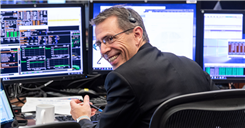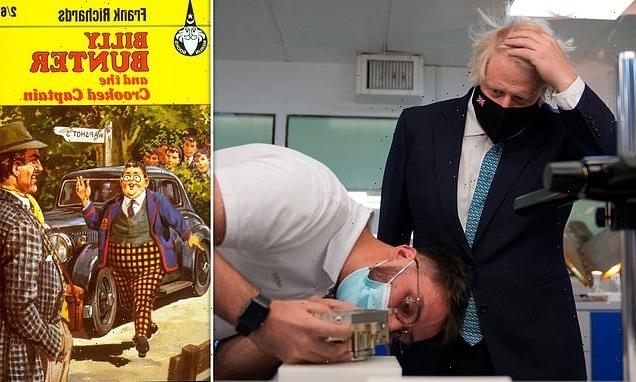The International Space Station, with a mass of more than 900,000 pounds and spanning an area as large as a football field, is not designed to do back flips like an Olympic gymnast.
But when a newly attached Russian compartment suddenly fired its thrusters on Thursday, NASA said on Twitter that the station tipped by 45 degrees. Actually, it was much more than 45 degrees.
“That’s been a little incorrectly reported,” said Zebulon Scoville, the flight director who was in charge at NASA’s mission control center in Houston during Thursday’s tumbling incident.
In an interview, Mr. Scoville described how the International Space Station spun one-and-a-half revolutions — about 540 degrees — before coming to a stop upside down. The space station then did a 180-degree forward flip to get back to its original orientation.
The seven astronauts aboard were never in danger, Mr. Scoville said, and the situation did not spiral out of control. Still, in seven years as a NASA flight director, this was the first time that Mr. Scoville had declared a “spacecraft emergency.”
Mr. Scoville was not even scheduled to work on Thursday. Another flight director, Gregory Whitney, led the operations on NASA’s side during the docking of the 23-ton Russian module named Nauka — “science” in Russian.
But Mr. Scoville had led earlier preparations for Nauka’s arrival, and he was curious. “So I decided to put on a tie and just go and watch it from the viewing gallery behind the control room,” he said. “And I was there with Holly Ridings, who’s the chief flight director, and Reid Wiseman, the chief of the astronaut office.”
After the docking, Mr. Whitney had some meetings to attend, so Ms. Ridings asked Mr. Scoville to take over the second half of Mr. Whitney’s shift. “And I’m like, ‘I’d be happy to. The docking — the hard part — is over. Let me go get a handover from him,’” Mr. Scoville said. “And so kind of impromptu, I went in and took the shift from him. He unplugged, I plugged in, and I turned around, and the caution warning board lit up.”
It was 11:34 a.m. Houston time.
“We had two messages — just two lines of code — saying that something was wrong,” Mr. Scoville said.
The messages said the space station had lost “attitude control” — that is, it had begun to tip. Usually, four large, heavy gyroscopes spinning at 6,000 revolutions a minute keep the space station steady, but some force appeared to be overpowering them.
“And so at first I was like, ‘Oh, is this a false indication?’” Mr. Scoville said. “And then I looked up at the video monitors and saw all the ice and thruster firings. This is no kidding. A real event. So let’s get to it. You get about half a breath of ‘Oh, geez, what now?’ and then you kind of push that down and just work the problem.”
Nauka’s thrusters had started firing, trying to pull away from a space station it was securely docked to.
Worse, there was no way to turn them off.
His counterparts at the mission control in Russia told him that Nauka was configured so that it could receive commands directly only from a ground station in Russia. The next pass over Russia was 70 minutes away.
The new Russian module is docked on the underside of the space station. When Nauka tried to move, it pulled down the rear of the space station, and the front pitched upward. “It’s exactly like doing a back flip,” Mr. Scoville said.
The rate of rotation reached a maximum of 0.56 degrees a second, Mr. Scoville said. That spinning is not nearly fast enough to generate significant artificial gravity — he said the astronauts reported almost no noticeable change in conditions within the station.
However, a spinning space station imparts stresses on the structure, and antennas are no longer pointing where they are supposed to. Mission controllers quickly informed the astronauts what was going on and gave them instructions.
“We knew we had a limited amount of time,” Mr. Scoville said.
Declaring a spacecraft emergency activated additional antennas in the United States that could communicate with the space station. But still, the connection between the ground and space was lost twice, once for four minutes, the other time for seven minutes.
Commands from the ground stowed and locked the station’s solar arrays. The astronauts took care of locking down the radiators, which emit heat from the station to space.
Although the Russian controllers had no way to regain control over Nauka, they could turn on thrusters on other parts of the space station.
Then the crew fired the thrusters on another Russian module, Zvezda, to counteract those of Nauka. When it appeared that might not be enough to stop the spinning, the thrusters on a docked Russian Progress cargo spacecraft pitched in as well.
After about 15 minutes, Nauka’s thrusters petered out. Mr. Scoville said he did not know why, although reports said the module had used up its propellant. The mission controllers could then more easily bring the station to a halt. “After doing that back flip one-and-a-half times around, it stopped and then went back the other way,” Mr. Scoville said.
An hour had passed; everything was back to normal. Mission controllers told the astronauts to take the rest of the day off and relax. Mr. Scoville said training exercises had prepared them well on what to do when the space station tips over.
“Probably the intensity goes up a little bit,” he said, “but there’s a pervasive kind of calmness of people not panicking and just looking at the data, figuring out what was happening and try to solve the problem from there.”
A statement on Friday from Roscosmos, the Russian space agency, said that there was a software glitch on Nauka, and that as a result, “a direct command was given to fire the module’s engines.”
Preliminary analysis indicates that the space station remains in good shape.
Despite the mishap, and friction between NASA and Russia over the future of the International Space Station, Mr. Scoville said he had no doubts over the station’s operations.
“I have complete confidence in the Russians,” he said. “They are a fantastic partnership with NASA and the entire International Space Station program.”
At the end of his unplanned shift on Thursday, Mr. Scoville let out an exclamation of relief on Twitter.
Oleg Matsnev contributed reporting.
Sync your calendar with the solar system
Never miss an eclipse, a meteor shower, a rocket launch or any other astronomical and space event that's out of this world.
Source: Read Full Article



